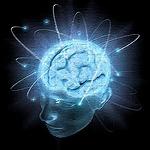 Stress is affecting your brain much more than you think. Sure, you’ve experienced the distraction, forgetfulness, negativity or anxiety that comes from stressful situations, but did you know it’s also shrinking your brain? Hormones released in response to stress not only affect brain function, they also change the physical structure of your brain.
Stress is affecting your brain much more than you think. Sure, you’ve experienced the distraction, forgetfulness, negativity or anxiety that comes from stressful situations, but did you know it’s also shrinking your brain? Hormones released in response to stress not only affect brain function, they also change the physical structure of your brain.
The stress hormone cortisol can kill, shrink, and stop the generation of new neurons in a portion of the brain called the hippocampus.(1) The hippocampus is critical for learning, memory and emotional regulation, as well as shutting off the stress response after a stressful event is over: all much needed processes in both our professional and personal lives.
Chronic stress also shrinks the medial prefrontal cortex.(2) This negatively affects decision-making, working memory, and control of impulsive behavior. Stress also has the ability to affect stem cells, inhibiting access to the prefrontal cortex where we plan complex cognitive behavior and moderate social interaction. The result is a brain that is less capable of learning and memory, and more prone to anxiety and depression.
To make matters worse, these same stress hormones increase the size and activity of a portion of the brain called the amygdala.(3) The amygdala is critical in the formation and storage of memories associated with highly emotional events. It pairs an event with a feeling, and this connection is stored away in our long-term memory so we can either avoid the event or seek it out in the future. The changes cortisol creates increase negative emotions such as fear, anxiety, and aggression.
These brain alterations can have significant consequences on the way we interact with others, our ability to learn, remember, make decisions and accomplish long-term goals. They also make it more difficult to successfully manage stressful situations in the future, leading to a vicious cycle.
Fortunately, we’ve discovered a very effective antidote to these negative effects: exercise. Exercise can build a stress-resistant brain in addition to increasing cognitive function and brain size.
Exercise spurs the release of a substance called brain-derived neurotrophic factor (BDNF), which helps in the development of healthy brain tissue and reverses the negative effects of stress.(4) Think of it as fertilizer for the brain. It keeps existing neurons vital and healthy and also encourages the growth of new ones. The more we exercise, the more BDNF we create, and the more neurons are generated, particularly in the hippocampus.
Exercise also releases human growth hormone (HGH), which is vital to the growth and development of all brain and body cells. HGH counteracts the natural cellular atrophy of aging and pumps up brain volume.(5) A single bout of sprinting for thirty seconds can generate a six-fold increase in HGH, with levels peaking two hours later.(6)
And thankfully you don’t have to do hour-long workouts to get many of these benefits. A recent analysis of ten studies found that five-minute doses of exercise have the biggest effect on enhancing mood and combating stress.(7) Whenever you have a few minutes, do something that gets your heart rate up and/or challenges your muscles. It’s a positive, constructive way to deal with stress and will keep you from losing your mind!
Citations
1) Sapolsky, Robert M. (1992) Stress, the Aging Brain, and the Mechanisms of Neuron Death. Cambridge, MA: The MIT Press.
2) Ansell, E., Rando, K., Tuit, K., Guarnaccia, J., Sinha, R. (2012) “Cumulative Adversity and Smaller Grey Matter Volume in Medial Prefrontal, Anterior Cingulate, and Insula Regions.” Biological Psychiatry. 72 (1): 57– 64.
3) Pittenger, C., Duman, R. (2008) “Stress, Depression, and Neuroplasticity: A Convergence of Mechanisms.” Neuropsychopharmacology Reviews. 33: 88– 109.
4) Cotman, Carl W., Berchtold, Nicole C. (2002) “Exercise: a Behavioral Intervention to Enhance Brain Health and Plasticity.” Trends in Neurosciences. 25(6): 295-301.
5) Ratey, John. (2008) Spark. New York: Little, Brown and Company. 256.
6) Ratey, John. (2008) Spark. New York: Little, Brown and Company. 256.
7) Barton, J., Pretty, J. (2010) “What is the Best Dose of Nature and Green Exercise for Improving Mental Health? A Multi-Study Analysis.” Environmental Science & Technology. 44: 3947– 55.

